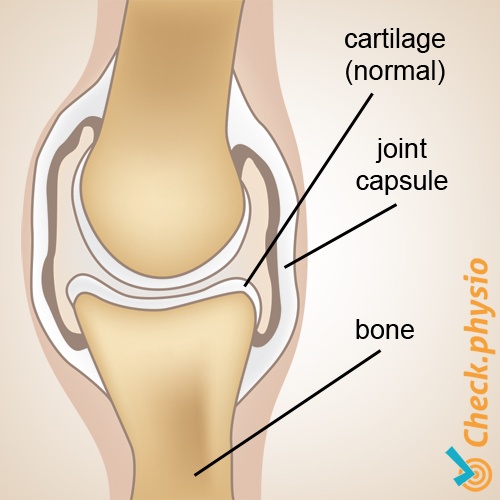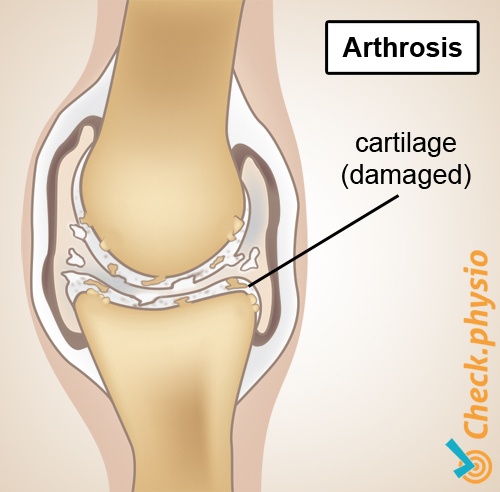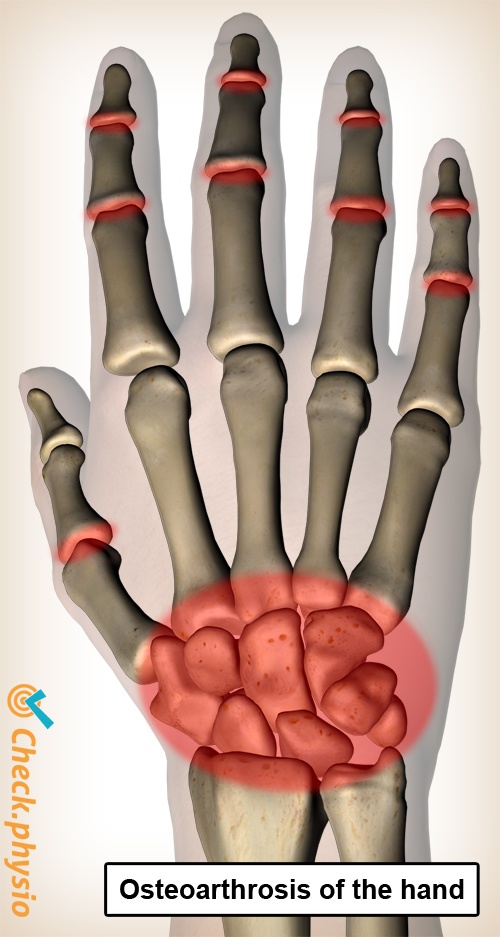- Conditions
- Osteoarthritis of the hand
Osteoarthritis of the hand Wear and tear of the hand and finger joints / Hand osteoarthritis
Introduction
osteoarthritis is characterized by pain and stiffness in joints as a result of wear-and-tear of the cartilage. Osteoarthritis of the hand mainly affects the fingers and the thumb-side of the hand or wrist. The symptoms occur with aging.
Wear-and-tear of the joints (osteoarthritis) is a natural process that affects everyone sooner or later. Most people over the age of 55 have osteoarthritis of the hand or wrist. Only 20% of them actually experience symptoms.

Description of condition
Most joints consist of two smooth bone tips covered with cartilage. The cartilage ensures that the bone segments glide over each other smoothly. osteoarthritis occurs when the smooth surfaces become irregular. Wear-and-tear occurs. osteoarthritis in the hands and fingers causes stiff and painful joints.
Despite the fact that the symptoms caused by osteoarthritis can be reduced, the cartilage will never recover. Once cartilage has been damaged, it does not grow back.
Cause and history
Normally, the symptoms develop gradually with aging or a prolonged mechanical load. The cartilage can also deteriorate after joint injury, or as a result of an autoimmune disease such as rheumatoid arthritis leading to osteoarthritis.
Signs & symptoms
osteoarthritis in the hand usually occurs in the fingers and on the thumb-side of the forearm. The following symptoms may occur:
- Pain in the fingers or on the thumb-side of the hand palm and wrist.
- Stiffness, particularly morning stiffness or stiffness when starting moving after a period at rest. The hand and fingers are extremely painful when they start moving again after a prolonged period of inactivity. Normally the worst stiffness disappears within 30 minutes.
- Pain during wringing movements.
- Loss of strength.
- As osteoarthritis often affects multiple joints, both hands may be affected.
Diagnosis
After an interview, inspection of the hand, and physical examination, the diagnosis of hand osteoarthritis can often be made with great certainty. Changes in the cartilage and bone are visible on an X-ray of the hand. However, additional testing is not always necessary because the treatment often does not change after an X-ray.
Only in more severe cases does the result of the X-ray lead to a different treatment such as surgery. Therefore, it is often decided not to conduct additional testing. This is to prevent pressure on healthcare and exposure to X-ray radiation.
Treatment and recovery
If the pain is severe, the joints need to be rested temporarily by avoiding certain activities. Flexing and extending the hand and wrist joints can help to preserve strength and mobility (making a fist, stretching fingers, spreading fingers). Controlled movement is good for the cartilage. Physiotherapy can assist you with this.
Various treatments can be implemented in consultation with a specialist:
- A splint can prevent overuse of the joint and may reduce painful symptoms.
- Analgesic and anti-inflammatory medication can be used in the periods when the pain is most severe.
- In severe cases, surgery may be performed to fix or remove the painful joints.
Surgery results vary. Sixty percent of patients are more or less satisfied, thirty percent continue to experience symptoms.
Exercises
Take a look at the online exercise program with exercises for hand osteoarthritis.
More info
You can check your symptoms using the online physiotherapy check or make an appointment with a physiotherapy practice in your locality.
References
Peters-Veluthamaningal, C., Willems, W., Smeets, J.G.E., Windt, D.A.W.M. Van der, Spies, M.N., Strackee, S.D., Vos, K., Wind, L.A. & Geraets, J.J.X.R. (2010) NHG-Standaard. Hand- en polsklachten Huisarts Wet. 2010:53(1):22-39.


